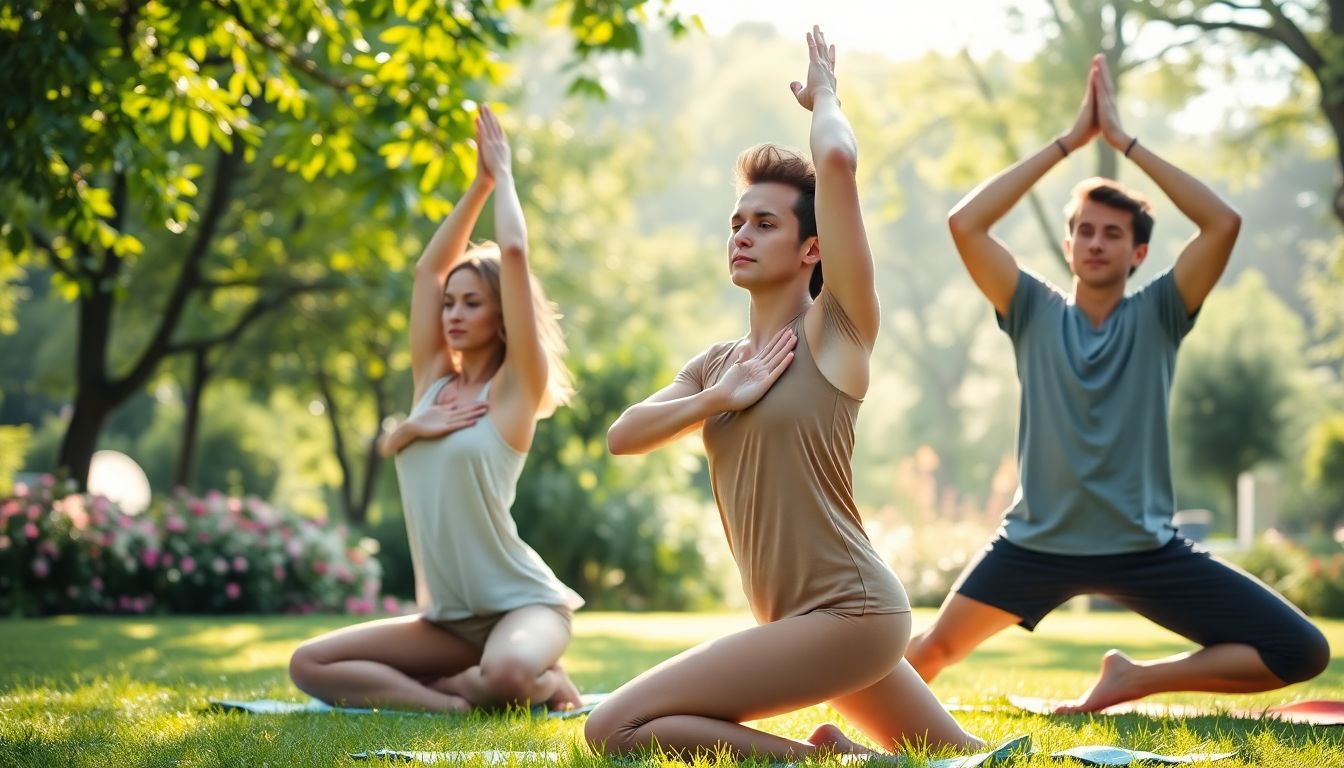
Unroll your mat and take a breath. Yoga is not just about fancy poses or perfect balance; it's a journey toward better wellbeing. This practice brings stress relief, focus, and a healthier life. No matter your experience level, yoga welcomes all of us.
The Allure of Yoga: Stress Reduction and Improved Well-being
People turn to yoga for many reasons. One of the biggest draws is stress relief. Moving through poses calms the mind and helps you find peace, even during chaotic times. Studies show that practicing yoga reduces anxiety and improves overall happiness.
Yoga's Accessibility: A Practice for Every Body
Yoga is for everyone. You don’t need to be flexible or fit to start. This practice adapts to individuals of all shapes, sizes, and backgrounds. Whether you’re a complete novice or someone returning to it after a break, yoga meets you where you are.
Setting Realistic Expectations: Your Yoga Journey Begins Now
Starting yoga doesn’t mean you need to master complex poses right away. Focus on progress rather than perfection. It’s crucial to set realistic goals. As you consistently practice, you’ll notice changes in your body and mind, making each session worthwhile.
Getting Started: Essential Equipment and Preparation
Before stepping onto the mat, prepare your space and yourself.
Creating Your Ideal Yoga Space: Comfort and Convenience
Your yoga space should feel inviting. It doesn't have to be large, just enough space for your mat. Make it cozy by adding:
- Soft lighting
- Comfortable temperature
- Calming scents like lavender
Choosing the Right Clothing: Comfort and Flexibility
Opt for comfortable clothes that allow movement. Materials like cotton or performance fabrics work well. Avoid anything too tight that restricts your flow.
Necessary Yoga Equipment: Mat, Blocks, and Straps
Invest in a good yoga mat for grip and comfort. Consider adding blocks and straps to assist with poses. They help you maintain alignment and ease into stretches.
Simple Poses for Beginners: Building a Foundation
Start with fundamental poses that establish a solid foundation.
Mountain Pose (Tadasana): Grounding and Centering
Stand tall with feet together, arms by your sides. This pose helps with grounding and posture.
Downward-Facing Dog (Adho Mukha Svanasana): Strength and Flexibility
From all fours, lift your hips up to form a triangle. This stretches your back, legs, and arms, building strength and flexibility.
Child’s Pose (Balasana): Rest and Relaxation
Kneel, sit back on your heels, and stretch your arms forward. This restorative pose provides a great way to unwind and relax whenever needed.
Breathing Techniques (Pranayama): The Cornerstone of Yoga
Breathing is an essential part of yoga practice. It keeps you centered and calm.
Ujjayi Breath (Victorious Breath): Calming and Energizing
Inhale deeply through your nose, slightly constricting your throat. This technique helps create a soothing sound, bringing focus and energy.
Nadi Shodhana (Alternate Nostril Breathing): Balance and Clarity
Use your thumb and ring finger to alternate closing each nostril while breathing. This method balances energy and brings clarity to your mind.
Benefits of Conscious Breathing: Stress Reduction and Improved Focus
Mindful breathing helps lower heart rate and strengthens concentration. This simple technique can create instant calm.
Yoga for Flexibility and Strength: Gentle Flows
Integrate gentle flows into your sessions for vitality.
Sun Salutations (Surya Namaskar): A Full-Body Warm-up
Start and finish your practice with Sun Salutations. This series of poses warms up your body and prepares your mind for deeper practice.
Warrior I and II (Virabhadrasana I & II): Building Strength and Balance
Warrior poses build confidence, strength, and balance. Stand strong, imagine yourself as a warrior ready to take on challenges.
Triangle Pose (Trikonasana): Improving Hip Flexibility and Balance
Wide stance, arms extended. Reach toward your foot, keeping your body aligned. This pose offers a deep stretch in your hips and torso.
Integrating Yoga into Your Daily Life: Consistency is Key
Making yoga a routine part of your life can enhance its benefits.
Finding Time for Your Practice: Incorporating Yoga into Your Schedule
Set aside a specific time each day for yoga. Even 10–15 minutes can make a difference. Treat it like an important meeting.
Yoga Modifications for Beginners: Adapting Poses to Your Needs
Don’t hesitate to modify poses. Use props or adjust your stance to suit your comfort level. The goal is to find what works for you.
Listening to Your Body: Respecting Your Limits and Preventing Injuries
Pay attention to how your body feels. Back off or adjust poses that cause discomfort. This practice is about nurturing yourself.
Conclusion: Embrace Your Yoga Journey
Starting your yoga journey opens doors to numerous benefits.
Key Takeaways: Benefits of Regular Practice
- Reduces stress and anxiety
- Improves mental clarity
- Enhances physical strength and flexibility
Next Steps: Exploring Different Yoga Styles and Resources
Once comfortable, explore other styles like Vinyasa or Hatha. Use online classes or local studios to deepen your practice.
Maintaining Your Practice: Tips for Long-Term Success
Stay consistent and patient. Celebrate small victories to maintain enthusiasm. Remember, yoga is a personal journey. Enjoy every step of the way.